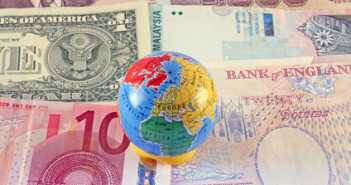It’s been another tough week for the Euro. A myriad of events have seen the common currency lose ground against both Sterling and Greenback once again. Domestically, weak Inflation data helped guide EURUSD to fresh 2-year lows, while GBPEUR has rallied to 26-month highs as the common currency came under renewed pressure.
Eurozone Consumer Price Index printed +0.3% for the month September; well below the European Central Bank’s (ECB) target of +2.0%. The data adds weight to the idea that the Eurozone will experience a prolonged period of economic instability. Suggesting that in contrast to the outlook for tighter monetary policy in recovering economies like the USA and UK, the EU will continue to maintain policy accommodation (low interest rates & QE) through 2015.
The other major Eurozone event was Thursday’s monetary policy announcement, at which ECB President Mario Draghi finally rolled out the much anticipated QE program, sort of. Draghi did provide some clarity, saying that the program will start in mid-October, that it will last for 2 years, and that purchases will focus on private debt (covered bonds and asset backed securities). However Draghi did not confirm the impact QE will have on the ECB’s balance sheet; a key element of assessing the strength of the program.
As we go into the weekend however, Eurozone events have been relegated to the back seat by American Non-Farm Payrolls. Data showed that the United States added 248k new jobs in the month of September, significantly better than the consensus forecast of 215k. This helped to drive the unemployment rate down to 5.9%, its lowest level since July 2008. These results reinforce the notion that the local recovery is building sustainable momentum and that the Federal Reserve can comfortably continue removing its simulative policies.
Accordingly the US Dollar has rallied strongly, pushing GBPUSD back to 11-month lows near 1.6000. This pair has now given back about 10-cents since it hit multi-year highs back in July 2013. On the back of the recent Scotland independence referendum and disappointing domestic wages numbers there appears to be persisting uncertainty in Sterling. This suggests that going forward gains in GBPUSD will be hard fought.
Not a particularly busy ahead on the data front, though there is some central bank events to be conscious of. Both The Bank of England (BoE) and the US Federal Reserve (Fed) will be in the spotlight on Wednesday and Thursday respectively.
Wednesday will see the Fed publish the minutes from its most recent policy meeting a couple of weeks ago; at which new, more aggressive rate expectations were rolled out. Specifically the Fed now expects that interest rates in the United States will be as high as 1.35% by the end of 2015, up significantly from the current 0.25%. As far as rates are concerned, it’s likely that in Q1 & Q2 of 2015 we will see a quiet period, during which the Fed will access the resilience of the post QE economy. Which suggests that there could be a rather aggressive schedule of rate hikes in the back end of next year. Financial markets will be looking for clarity in the minutes on those expected rate hikes.
As well markets will be seeking transparency on the tapering down of the Fed’s QE program. Only $15-billion of asset purchases per month remains from the once $85-billion per month stimulus package. Considering that tapering has usually been done in tranches of $10-billion, the question now is whether the Fed will wrap the program up completely at its meeting this month (Oct 29th)? Or will it only taper out part, leaving the remainder until the November meeting?
Next Thursday the BoE will make its regular policy announcement. However given stubborn inflation and wages growth in the UK, no changes to interest rates or its own QE program are expected. Furthermore the BoE tends not to give press conferences or new guidance if no policy changes are made. As such it could be a bit of a non-event for Sterling on Thursday.
More:Â Winter of discontent potentially beckons for EUR



